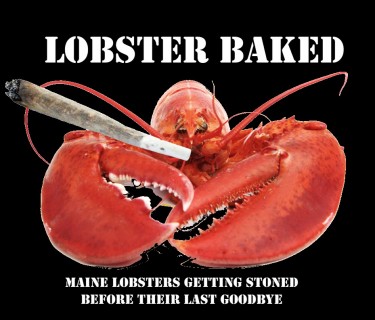
Get lobsters high before you cook them
For lobster lovers, there is no need to describe the appeal of freshly cooked lobster. Lobsters have more than what can be described in words, they have a special pull that makes them go to great lengths to get a taste. Cannabis has been added to many dishes, foods, and beverages to make a range of edibles possible, but unfortunately, lobsters don’t fit into that category. It will then surprise many why we speak of lobster and THC in the same sentence. Read on as we take a closer look at the role THC can play in getting the cooked animals ready for consumption.
The traditional model of preparing lobsters is to cook them alive in the pot. While very effective and gives the desired result, the obvious excruciating feeling that the lobsters struggle with is not a pretty sight. It’s true that the lobsters will eventually die, but not everyone is ready to inflict great pain on the creatures. Because of this, many have sought a more humane way to have the lobsters die while they are still cooking the traditional model. This brought us to the inclusion of THC and how cannabis might be the elusive answer many are looking for.
The role of THC in calming lobsters
THC is an important cannabinoid in the cannabis plant that makes cannabis users feel euphoric. In addition to the characteristic high, it also induces other mental effects thanks to its entourage effects with other cannabinoids embedded in the matrix of the cannabis plant. Other cannabinoids are CBD, CBG, and CBC, and examples of the effects they cause include sedation, relaxation, among other medicinal effects.
This apparent property of THC of inducing relaxation and euphoria prompted a chef in Maine to treat lobsters with cannabis before putting them in the saucepan. The purpose of this is to make the lobsters tall enough to make them less difficult when thrown into the saucepan. However, it is quite natural to expect the lobsters to react naturally at the sight of impending death. Nonetheless, the chance to use cannabis to reduce how hard they struggle is an opportunity that cannot be passed without careful consideration.
The proponent of this unique idea is Charlotte Gill, who is also the owner of Charlotte’s Legendary Lobster Pound in Main and a licensed medical marijuana nurse. It is easy to see that the uniqueness of her roles in both organizations would have been the main factor that gave her this unique approach. In her own words, while addressing the Mount Desert Islander, Charlotte stated that it was not pleasant to see Hummer killed without an exit strategy. With her knowledge as a medical marijuana caregiver and a proper understanding of cannabis’ role in imparting pain and euphoria, she stoned a lobster before cooking it.
According to their account, the lobster appeared cold even after being placed in the boiling water. There was no sign of it snapping its claws, which is a normal reaction expected when lobsters are placed in boiling water. After that day, Gill’s restaurant began pacifying lobsters with a hotboxing tank using a pump that introduced water and pop smoke. The first question will probably be whether the THC in the lobsters reaches the end user. Well, the temperature at which THC is completely broken down and loses its psychoactive effects is 392 degrees. The cooking process used on lobsters involves heat and steam rising to 420 degrees, which means the marijuana cannot get to the diner.
Does science confirm this effect of THC on lobster?
It is natural that while the evidence and Charlotte Gill’s account sound logical, we still want to be sure what actual science has to say about it. A research group from the University of California at San Diego took this theory test and came to a very interesting result. Live crustaceans were exposed to vaporized THC for one hour during the test. Various tissue samples were then examined from the lobster, including its gills, heart and brain. The result showed that THC was actually absorbed into the lobster’s body, causing behavior changes.
This study is very important because over time and largely in other studies, it has been found that cannabis has no effects on animals including cats and fish. Hence, evidence that THC was absorbed into the lobster’s body and that vaporizing it may have made them calmer creates a new void that can be explored.
This knowledge is especially important in countries like Switzerland, where it is forbidden to cook lobsters alive. Swiss chefs use common methods of electrocuting or stabbing lobsters in the eyes, which is no different from cooking alive. It is therefore worth exploring other options that will open the lobster to less pain and suffering before it gives our taste buds pleasure.
Bottom line
It’s very hard to tell what will happen to the lobster after it’s stoned and put in the saucepan. It is true that they can be stoned and much less keen to respond to natural stimuli, but that doesn’t necessarily mean they won’t feel pain. The search for more humane ways to prepare lobster may need to continue or more research into the possible role of THC may be conducted. One thing is for sure, Charlotte and her restaurant will continue this process and with Maine being a legal market for recreational grass sales we can be sure that more restaurants will soon follow this trend.
LOBSTERS AND WEEDS, READ MORE …

MAINE LOBSTERS ARE STONE BEFORE THEY ARE COOKED!

Post a comment: